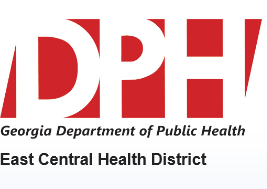Make your own Ready kit with the items on the checklist below. Most of the items are inexpensive and easy to find, and any one of them could save your life. Headed to the store? Download a printable version to take with you. Once you take a look at the basic items, consider what unique needs your family might have, such as supplies for pets, seniors or family members with special needs. Add those items to your kit and start packing it today. Download the Ready Georgia app to have this checklist with you all the time. Or, for a customized emergency plan that will include a detailed checklist with items that are specific to you and your family’s needs, as well as a communications plan to help you reconnect after an emergency, create a user profile now.
Recommended Items
- Water. One gallon per person per day, for at least 3 days, for drinking and hygiene
- Food. At least a 3-day supply of non-perishable food
- Click here for recipe ideas featuring non-perishable foods, manual tools and alternative heating sources.
- Can opener. For food, if kit contains canned food
- Radio. Battery-powered or hand crank radio and a NOAA Weather Radio with tone alert, and extra batteries for both
- Emergency charger for mobile devices
- Flashlight and extra batteries
- First aid kit
- Whistle. To signal for help
- Face mask. To help filter contaminated air and plastic sheeting and duct tape to shelter in place
- Moist towelettes, garbage bags and plastic ties. For personal hygiene
- Wrench or pliers. To turn off utilities
- Local maps
Additional Items
- Prescription medications and glasses
- Infant formula and diapers
- Pet food, extra water, pet supplies, toys and vaccination forms.
- Important family documents such as copies of insurance policies, identification and bank account records in a waterproof, portable container
- Cash or traveler’s checks and change
- Emergency reference material such as a first aid book
- Sleeping bag or warm blanket for each person. Consider adding bedding in cold weather.
- Complete change of clothing. Include a long sleeved shirt, long pants and sturdy shoes. Consider adding clothing in cold weather.
- Household chlorine bleach and medicine dropper
- Fire extinguisher
- Matches in a waterproof container
- Feminine supplies and personal hygiene items
- Mess kits, paper cups, plates, plastic utensils and paper towels
- Paper and pencil
- Books, games, puzzles or other activities for children.
For a list of community preparedness resources, view our Online Toolkit. And, is your business ready? Download Adobe Reader to view the PDF file. View the American Sign Language video on general emergency preparedness at Accessible Emergency Info’s YouTube channel. In addition to creating a Ready kit, it is important to stay informed. Learn more about potential threats and disasters.






